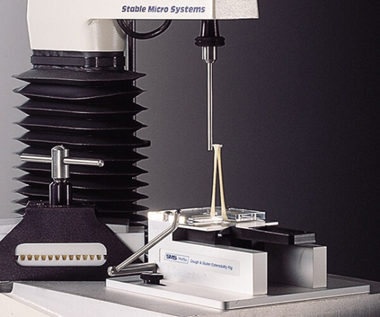Introduction
Texture is main characteristic of product quality. The
textural properties of finished bakery products depend on some factors such as
preparation of dough, mixing of ingredients, mixing time and interactions
between different ingredients. The textural properties are measured by texture
analyzer with different probes. Texture is also impact on consumer acceptance
and mouthfeel. There are some textural properties such as extensibility,
springiness, stickiness, staleness, firmness, softness, volume, chewiness,
cohesiveness, adhesiveness, rubberiness, crispiness, gumminess, moistness,
fracturability, stretchability, crunchiness and toughness. All these properties
are impact on texture of baked products. More properties depend on the type and
amount of flour and further depend on water and then on other ingredients such
as sugar, eggs, leavening agents etc.
Extensibility: Cake
Extensibility is the ability to be expand or stretch. There is more extensibility in cakes because cakes are made from soft wheat flour that have less protein. Due to the less amount of protein in soft wheat flour, there is lower development of gluten that make the product more extensible. There is more expansion in cakes. Soft wheat products have more extensibility. More the extensibility of cake, more will be good quality. When the dough is softer and more extensible then the baked good is tender. It is determined by Kieffer dough extensibility rig through time and force apply on dough. Force is applied to stretch the dough. More the force is used, more will be extensibility.
Springiness: Bread
Springiness means elasticity is the ability of product to regain its original position or shape after applying the pressure. There is more springiness in bread because bread is made from hard wheat flour that have more protein. Due to the high amount of protein in hard wheat flour, there is higher development of gluten that make the product more elastic. Hard wheat products have more springiness. There is more springiness in fresh bread and it will reduce when it is stalled. There are many factors that effect on the springiness of bread such as amount of protein in flour, hydration level of dough, development of gluten structure and sugars. When the dough is stronger and more elastic the baked good is firm and hold its shape. Springiness is determined by Texture Profile Analyzer that is compression test to apply the force on product to determine the elasticity.
Stickiness: Bread/Cake
Stickiness is the combination of adhesion (association between material and surface) and cohesion (association within the materials). Stickiness is produced by some factors during dough preparation that effect on final baked product such as more moisture, more sugars, more gluten, improper heating during baking, improper proofing time and improper baking. There is more stickiness in hard wheat products because of high gluten development. Stickiness is also produced by improper mixing time and wheat variety. Stickiness reduces the quality of product. It is determined by Chen-Hosney dough stickiness rig through time and force apply on dough.
Staleness: Bread
Stalling in baked goods cause to lose the eating qualities
and freshness of bakery products. Crumb and crust both are involved in
stalling. More moisture loss and retrogradation of starch during cooling cause
stalling. After baking, when the cooling process of bread is start, the
moisture content will loss and move from crumb to crust that will make the
crumb hard and crust soft. During cooling, due to moisture loss, the starch
become recrystallized and make the bread hard. Amylose recrystallize more quickly
than amylopectin. Due to stalling, elasticity of bread will be reduced.
Stalling is prevented by adding sugar and emulsifiers that absorb water and
prevent from moisture loss. More amylase enzymes and damaged starch also
prevent moisture loss by absorbing more water. There are different instruments
are used to determine the staleness but more appropriate one is sensory testing



No comments:
Post a Comment